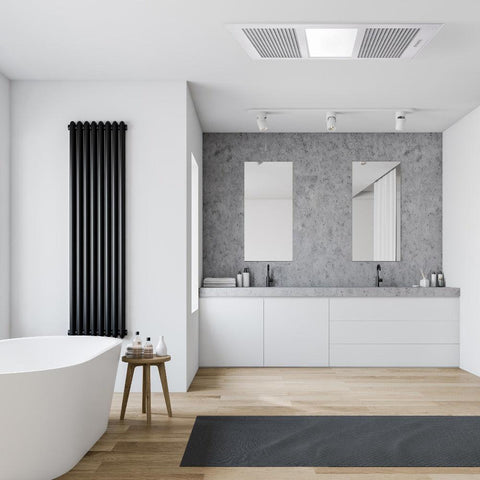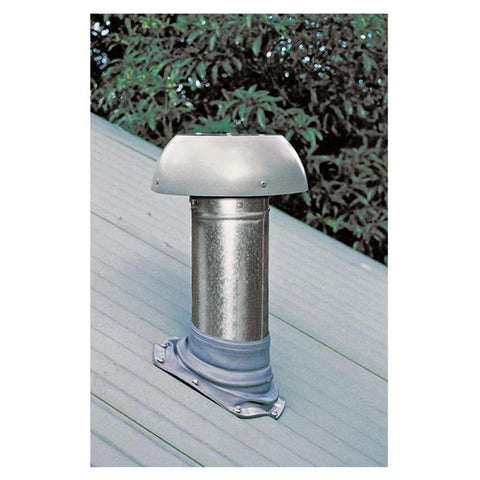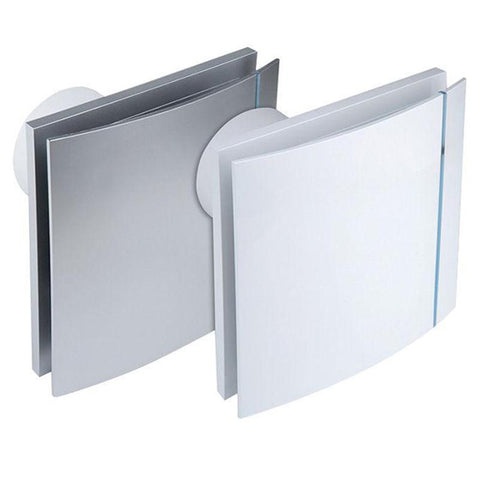Selecting the right exhaust fan is crucial for the long-term maintenance of your property, as well as your own health. Exhaust fans remove moisture from the air, as well as unwanted odours, smoke and other air pollutants. The right fan will prevent damp and mould as well as, quite simply, making your room a nicer, fresher space.
With lots of different fan sizes and technical jargon floating around, finding the right fan can be tricky. Our handy calculator and guide are here to help.
Contents
- Exhaust fan calculator
- Air changes per hour
- Types of exhaust fan
- Other factors to consider
- Installation tips
What size of exhaust fan do I need?
The size of the fan you need depends on two key things:
-
How much air you need to move - this is the type of room you’re putting the fan into (see air changes per hour for more details)
-
The size of the room
Fill out the fields below with this information to see what size of exhaust fan you need.
Step 1: Select Installation Location
Step 2: Enter your room size
Enter your room width (m)
Enter your room length (m)
Enter your room height (m)
Your room size in m3
Result: Approximate Fan Capacity should be between:
*This result is a guide only. We highly recommend speaking to one of our team to confirm your fan selection. They are available by phone and email to provide free, expert product advice.
Air changes per hour
Air changes per hour (ACH) refer to the amount of outside air you should have introduced into a room or building within an hour. This term refers to how well-ventilated a room or a home is. The higher your ACH, the more ventilated a room is.
Different room types have different recommended air changes per hour, often dependent on the moisture in those spaces. Some common exhaust fan rooms and their recommended air changes per hour are listed below:
| Location | Air Changes Per Hour |
|---|---|
| Bathroom (toilet only) | 6 – 15 |
| Bathroom with a shower | 15-25 |
| Bedroom | 5-8 |
| Cafe | 15-25 |
| Computer Room | 6-10 |
| Factory / Workshop | 6-10 |
| Garage | 6-8 |
| Commercial Kitchen | 20-30 |
| Domestic Kitchen | 15-25 |
| Laundry(No Dryer) | 6-15 |
| Laundry(With Dryer) | 15-25 |
| Commercial Laundry | 11-20 |
| Office | 4-6 |
| Roofspace | 8-10 |
| Sub Floor | 6-10 |
| Spa Bathroom | 15-25 |
Types of exhaust fan
There are 6 main types of exhaust fan to choose from. These may also be referred to as extractor fans - exhaust and extractor fans are technically the same thing.
 |
Ceiling-mounted |
 |
Roof-mounted A roof-mounted fan is installed in the ceiling of a room, but it extends above the roof. You can see a roof-mounted fan from the exterior of the home. Roof-mounted fans typically work to ventilate attics, keeping them free from humidity. |
 |
Inline An inline fan sits flat or slightly recessed into the air duct itself. Inline exhaust fans are typically powerful options and are often used commercially, too. These can be positioned in the wall or ceiling, differing from traditional wall or ceiling mounted fans by the fact they pull air out, rather than push it out. |
 |
Wall-mounted Wall-mounted fans can be a cost-effective way to ventilate a room, particularly if the room has an exterior wall. The fan is mounted in the wall with a duct pumping air through the outside wall of the house. Typically, people use a wall-mounted fan when there's no way to vent to the attic. |
 |
Window Similar to a wall-mounted fan, but mounted into the pane of the window. Window extractor fans work best when you do not have enough room or the ductwork for an exhaust fan. |
 |
Range hood This is the exhaust fan that typically sits about your stove or cooker. It provides strong, localised extraction. |
What else should I consider when choosing an exhaust fan?
Sound/ noise
All fans make some noise as they move the air around, but while some are almost silent, others are far from it. It’s important that you choose a fan that you can tolerate and, for example, won’t wake up the person in the next-door room when the bathroom is in use.
The type of fan you use and it’s positioning will also impact how loud it is. Fans that rest on the wall or ceiling typically make more noise than an in-line fan.
We recommend checking the product details to see if it has any information on sound. If you’re going to a store, ask to have the fan turned on while you’re there.
Some fans will list the sound in sones. As a reference point, a refrigerator is equivalent to 1 sone and your bathroom fan should be 1 sone or less. Some can get as low as 0.3 sones.
If you’re unsure, our team are happy to help.
IP Ratings
Since exhaust fans are typically placed in dusty or wet areas, it is important to check their IP ratings - this is a measure of how much water or dust they can withstand. Most extractor fans will carry an IP rating of IPX4+ but it is worth making sure before purchasing, particularly for showers and bathrooms. To understand more, read our IP rating guide or speak to a member of our team.
Combination fans
If you’re considering an exhaust fan for your bathroom in particular, it would be worth considering a 2-in-1 (light and fan) or 3-in-1 (light, fan and heat) solution. These are efficient to run and save space, ideal for smaller rooms.
Energy Efficiency
When considering energy efficiency, opt for LED lighting in your exhaust fans. Additionally, research the heating wattage; while some fans generate quick heat, they may consume a significant amount of power. Ensure the heating power aligns with the size of your bathroom for optimal efficiency.
Installation Requirements
Always check first your ceiling depth before purchasing to see what you are working with. Some exhaust fans are very deep and need a lot of clearance to install.
Humidity Sensing and Timer Features
Humidity sensing and timer features are excellent additions to combat mold and moisture buildup. A run on timer function by prolonging the operation of the exhaust fan after you've switched off the lights and fan, ensuring thorough moisture removal. Typically, setting the timer for an additional 3-5 minutes suffices to eliminate lingering moisture.
Brand Reputation and Warranty
Always purchase from well-established brands. You wouldn't want to cut large holes in your ceiling only to discover that the fitting doesn't match. The top brands typically offer a home warranty, providing peace of mind that they'll send someone to fix or replace any issues. We recommend brands like Ventair, Mercator, Brilliant, Fantech, Martec, and Eglo.
Exhaust Fan Installation Tips
If you're an experienced weekend warrior and love a DIY project, you can install an exhaust fan yourself. Before you begin, there are a few things to consider:
-
You may have to run electrical wiring and ductwork through your attic. Plan this out carefully and ensure you have everything you need.
-
If you're replacing a fan, you will need to ensure the old wiring can handle the needs of the new fan. This is not a given. Check the model of your old and new fan to compare the details. If you’re unsure, it’s worth checking with a product expert.
-
Check your building codes before you start work. Some building codes prevent any work impacting floors or ceilings, and this can include installing an exhaust fan.
If in doubt, speak to an electrician or electrical planner to get advice before starting the installation process.
Buy Exhaust Fans Online
We stock a huge range of exhaust fans at The Lighting Outlet, available for delivery across Australia. For more advice on selecting the right fan or checking fan sizing, our team are on hand to help.






